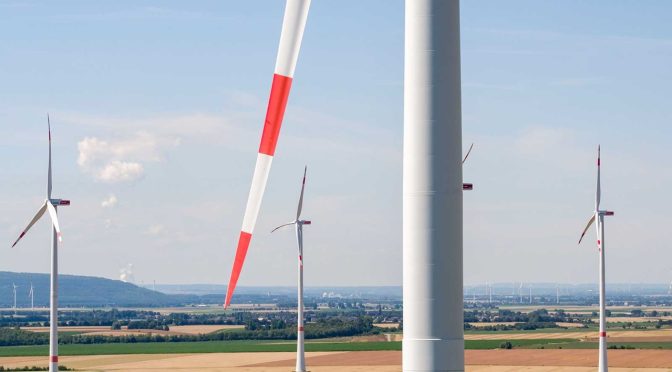
The country needs more wind turbines – and it needs them faster. That is the goal of the federal government. The knot is now to be broken for an accelerated expansion of onshore wind power. Because the industry still sees brakes. These are now to be solved. That is the signal from the “Wind Summit” held on Wednesday at the offices of Economics Minister Robert Habeck.
Last year, a large number of packages of measures were adopted, for example in planning and approval law, said the Green politician in Berlin. Large chunks on the way to an accelerated expansion had been cleared away. However, “smaller stones” are still on the way.
For a more than quadrupling of the current expansion, all obstacles to the expansion of wind energy would have to be removed. The “wind summit” was attended by representatives of the energy industry, leading municipal associations, the federal states, trade unions and other federal ministries.
A “wind energy onshore strategy” is now planned. The ministry mentioned, for example, better incentive effects, better financing conditions for direct contracts between energy producers and electricity consumers, and the question of how land can be made available for wind energy to supply industry. Further, it is a question of speedy transportation of wind turbines and securing land.
Consultations on the strategy are planned until the end of March, when it will be drawn up and presented at a second wind power summit, probably in April.
The expansion of renewable energies from wind and solar power plays a key role in the German government’s strategy to achieve climate targets and become less dependent on fossil fuels such as coal and gas. According to the German government’s plans, 80 percent of the country’s electricity is to come from renewable sources in 2030, compared with around half at present. Electricity demand is expected to increase enormously, due to millions of electric cars and heat pumps. Only recently, there was a “solar summit” with Habeck, and the construction of solar plants is also to be accelerated.
The wind industry is not satisfied with the start to 2023. The target of an addition of 4.5 gigawatts was not achievable this year, the German Wind Energy Association stated back in January. Too few projects are being approved. The approval procedures are still too long. In addition, there are problems with the transport of wind turbines, for example.
Chancellor Olaf Scholz (SPD) had said that four to five new wind turbines per day would have to be installed by 2030, but that would probably not be enough. “We need more like seven to eight new wind turbines to achieve climate targets,” said Wolfram Axthelm, managing director of the German Wind Energy Association. The figure of four to five new wind turbines per day had already been reached in the record expansion year of 2017, he said. After that, however, things went downhill. Last year, the number of new wind turbines connected to the grid increased. Installed were 551 wind turbines with a capacity of 2.4 gigawatts. However, the number of new installations and permits granted so far has not been enough to meet the federal government’s targets.
That is why more speed is now to be set. Habeck said that an annual increase of ten gigawatts should be achieved by the middle of the decade.
However, this does not mean a fourfold increase in the number of new turbines, because new wind turbines are much more powerful than existing ones. Above all, the states and the subordinate authorities are now called upon in the implementation, said Axthelm. States cannot shirk their responsibility, he said. With every month that the number of permits does not increase, the pressure rises, he said.
The association has long complained about a north-south divide in the expansion of wind power. Last year, Schleswig-Holstein, Lower Saxony, Brandenburg and North Rhine-Westphalia together accounted for 77 percent of new construction, according to industry figures. Binding area targets have now been agreed for the states.
Referring to local authorities, Habeck said that the speed of approval required had not yet been achieved. Nine gigawatts of capacity are currently in the approval process. But there has been a change in the authorities, the minister made clear. In the past, there was often an extra loop – wind turbines are often controversial on site. That has changed. There is a need for additional construction, Habeck said, referring to companies that put pressure on for more green power. The German Wind Energy Association commented after the “wind summit”: